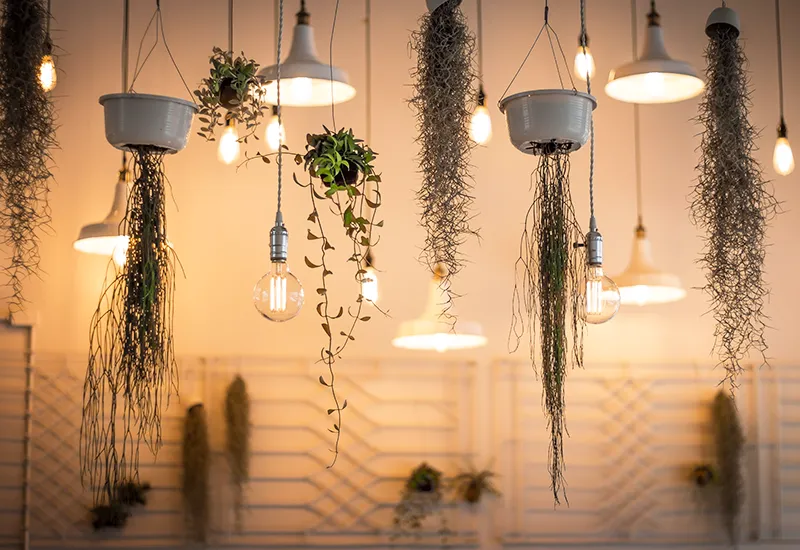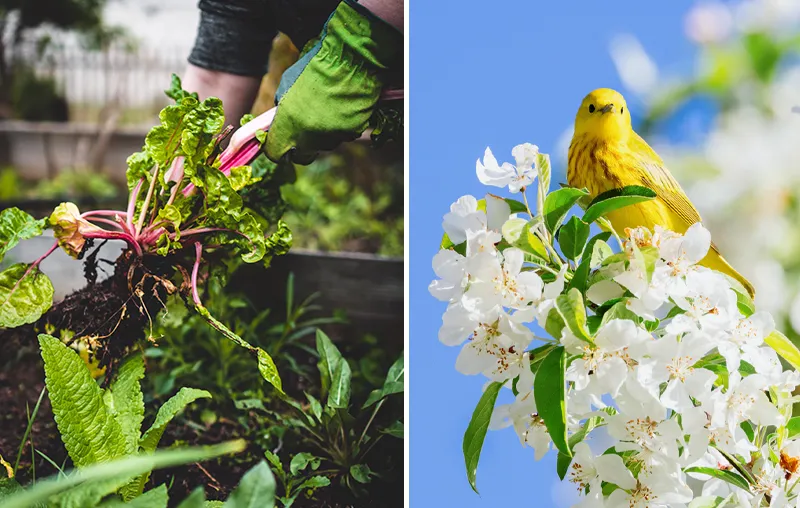Want to know how sustainable LED lights are? Then you've come to the right place! Whether for lighting in your own four walls, in offices or for street lamps: LEDs are considered an environmentally friendly alternative to light bulbs and halogen lamps. While old light bulbs were real power guzzlers, LEDs represent the artificial light of the future - and are already standard today. But are they really so environmentally friendly in comparison - and what are the key advantages?
In this article, we take a look at why LEDs are considered a sustainable solution, what advantages they offer and whether there are any downsides. Let's go!
Here you can find a short overview in advance:
- Features of sustainable lamps
- Comparison with other light sources
- Potential for improvement
- Tips for sustainable use
- Closing words
What makes a lamp sustainable?
Whether a light source is environmentally friendly or not depends primarily on various factors from. I'll show you what you should pay particular attention to when making your choice here:
- Lifetime: A long service life reduces electronic waste and Conserves natural resources.
- Energy Efficiency: The less electricity a lamp consumes, the better its eco-balance and the smaller your ecological footprint.
- Materials: Environmentally friendly, recyclable or pollutant-free components are crucial.
- Light Pollution: Sustainable lighting should be glare-free and efficient, the Biodiversity and avoid unnecessary light emissions.
- Production & disposal: Environmentally friendly production and easy recyclability are key to the sustainability of a light source.
LED vs. other light sources: a comparison

The graphic of the Bavarian State Office for the Environment clearly shows that LEDs are not only more energy-efficient than conventional light sources, but that their low power consumption and their Longevity convince.
As LEDs produce light through the movement of electrons in a semiconductor material, their use allows you to produce light in a more efficient way than incandescent bulbs. up to 90 percent of the energy save. The latter loses most of its energy as heat. As a result, they save a massive amount of energy compared to conventional light sources and reduce climate-damaging CO2 emissions considerable.
While incandescent lamps only last around 1,000 hours and halogen lamps a maximum of 2,000 hours, light-emitting diodes (LEDs) last around 25 times longer average service life. This also means that they low maintenance and produce less electronic waste.
In addition, the Recycling LEDs work very well because the light sources do not contain any toxic mercury or any other harmful substances.
Another advantage is the Flexibility in the application. There are LED light bulbs in classic sizes such as E14 and E27, LED tubes, LED spotlights and also LED panels that provide even, efficient illumination. For example, I have high-quality LED panel 62×62 in my office. They are just as suitable for surgeries or living rooms.
The most important advantages of LEDs at a glance
To give you a better overview, I have listed all the important advantages of sustainable LED lamps compared to conventional light sources:
- High energy efficiency: up to 90 percent Less power consumption
- Longer service life: last up to 25 times longer than incandescent bulbs
- More environmentally friendly: No mercury, less electronic waste and a better CO2 balance
- Better light quality: Dimmable, flicker-free, individually (also color) adjustable (also via WLAN)
- More impact and heat resistant: No filaments and glass elements
- More sustainable disposal: Safe and resource-saving recycling
Do LED lamps still have potential for improvement?

LEDs are currently the most sustainable light source. Nevertheless, there are some disadvantages and Potential for improvementthat could be used in the future.
A frequently mentioned point of criticism is the higher purchase price compared to conventional light sources. However, this is quickly amortized by the longer service life and the energy costs saved.
In addition, the blue light component in certain LED lamps influence the sleep-wake rhythm. To Sleep betterit is advisable to use warm white LEDs (2,700K - 3,000K). These are also more pleasant for the eyes.
From an ecological point of view, the use of rare earths problematic for production. Although improves the recycling of these critical raw materials However, there is still potential for improving the sustainability of LEDs.
In addition, a Insufficient heat dissipation affect the service life of LEDs. However, modern models with cooling mechanisms prevent this and ensure a long service life.
Tips: How do I use LEDs as sustainably as possible?
We believe that LED luminaires are the most sustainable light source, but they still have potential for optimization. Both from a technical point of view and from the consumer side.
In order to to exploit the full potential of LED lampsyou should pay particular attention to the following simple tips:
- Choose high-quality LED lamps: Look out for durable models with high energy efficiency and reputable certifications such as the EU energy label.
- Go for green electricity: The power from your socket should come from renewable energy sourcessuch as solar, hydro or wind power. It's worth switching to a green electricity provider!
- Choose LEDs Suitable for the respective location: The recommended color temperature (in Kelvin) is warm white (2,700K - 3,300K) for cozy living rooms, neutral white (3,300K - 5,300K) for hallways, kitchens or bathrooms - and cool white (over 5,300K) for study and office lighting.
- Position LEDs specifically and only use them when requiredThe main environmental impact of LEDs is their power consumption during use. Therefore, use motion detectors, timers or smart home systems to switch lights on only when they are needed. This way you avoid the Rebound Effectwhere energy savings are canceled out by excessive use.
- Prefer dimmable LEDs: If your lamp is dimmable, you can adjust the brightness individually, save energy and specifically extend its service life.
- Keep individual luminaires as interchangeable as possible: If possible, use replaceable LED light sources. They are more sustainable than permanently installed lights, as you can repair or replace defective LEDs without having to dispose of entire lamps.
- Dispose of LEDs correctly: LED lamps do not belong in household waste! Instead, hand them in at collection points or recycling centers so that the valuable raw materials can be recycled and reused in an environmentally friendly way.
- Avoid light pollution in a targeted manner: Counteract the extinction of speciesby placing as few artificial light sources as possible outdoors. Then use warm white light with low brightness, direct lamps downwards and use motion detectors.
LEDs are the most sustainable light source
LEDs require only a fraction of the energy consumed by conventional light bulbs, have a significantly longer service life and can be produced in an environmentally friendly way. Even if they still have potential for improvement, they are the the most promising light source for a successful Energy Transition.
By consciously opting for long-life LED lamps and using them sensibly, you can reduce your Further reduce ecological footprint. However, it is basically an investment that is worthwhile for both our environment and your wallet.
"We cannot solve our problems with the same thinking we used when we created them."
Albert Einstein (more under Environmental protection quotes)
Do you have any questions, suggestions or other tips for making LEDs more sustainable? Then I look forward to your comment.
Stay environmentally conscious,

PS: How else you can use the Improve energy efficiency you can now find out in the linked blog article!









